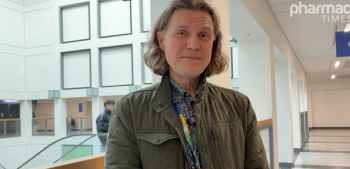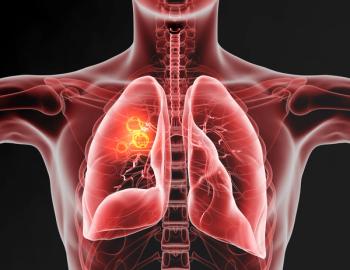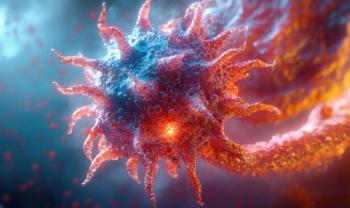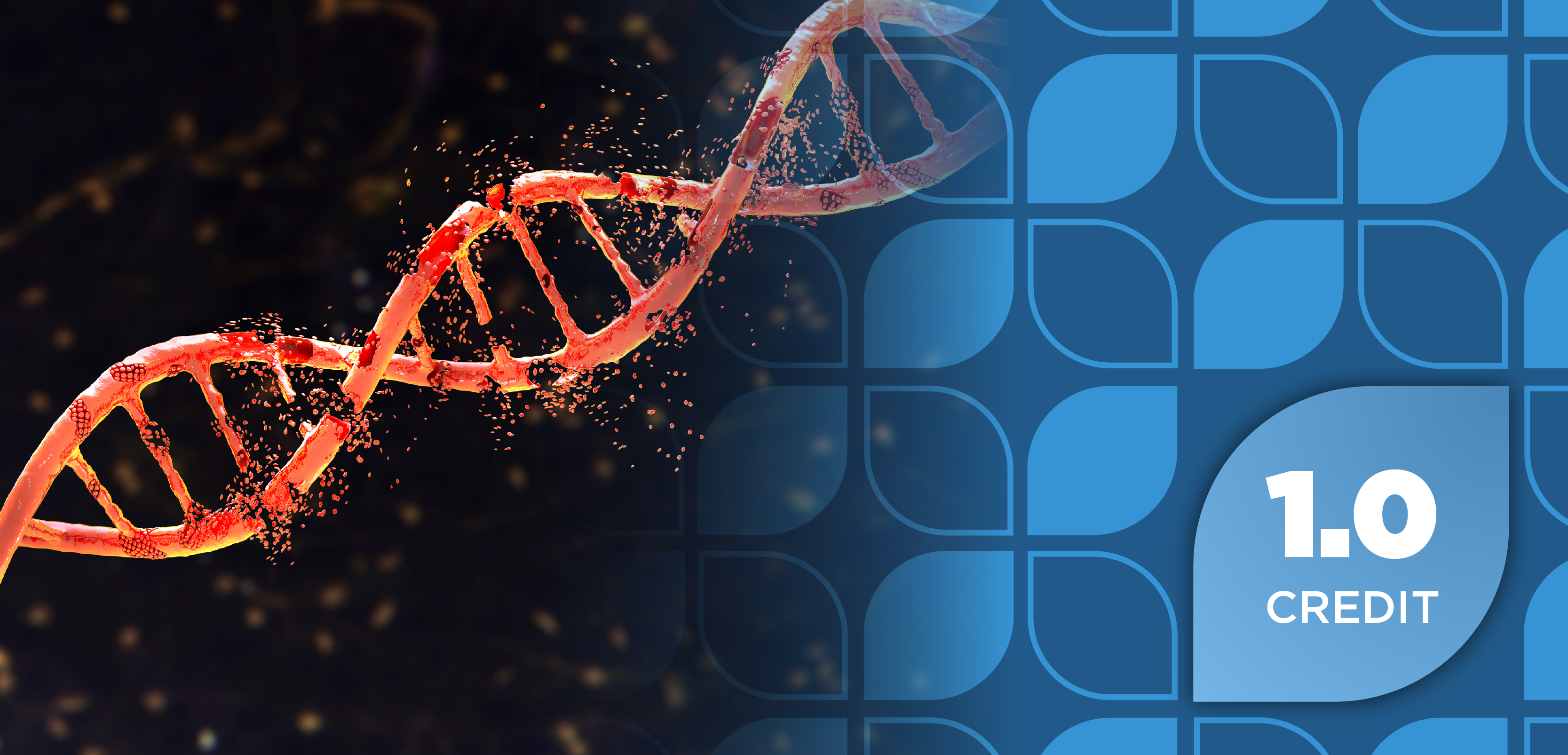
Is Belantamab Mafodotin Making a Comeback?
Key Takeaways
- Belantamab mafodotin shows potential in RRMM treatment, especially in patients with high-risk cytogenetic abnormalities, despite its market withdrawal.
- DREAMM-7 and DREAMM-8 trials demonstrated significant PFS improvements with belantamab mafodotin-based regimens in HRCA subgroups.
The agent continues to show promising clinical benefit despite being pulled from the market in 2023.
Belantamab mafodotin (Blenrep; GSK), an antibody-drug conjugate targeting BCMA, continues to show potential in the treatment of relapsed/refractory multiple myeloma (RRMM) despite its withdrawal from the US market in 2023. Originally granted accelerated approval based on DREAMM-2 trial (NCT03525678) data, its confirmatory trial, DREAMM-3 (NCT04162210), did not meet its primary end point of improved progression-free survival (PFS), leading to the withdrawal. However, ongoing research continues to explore its value in combination regimens and earlier lines of therapy.1-3
At the 2025 American Society of Clinical Oncology (ASCO) Annual Meeting, results from a post hoc analysis of the phase 3 DREAMM-7 (NCT04246047) and DREAMM-8 (NCT04484623) trials were presented, focusing specifically on patients with high-risk cytogenetic abnormalities (HRCAs)—a subgroup that typically has poorer outcomes and limited effective treatment options.4,5
DREAMM-7
In DREAMM-7, patients with RRMM who had received at least 1 prior line of therapy were randomly assigned 1:1 to receive belantamab mafodotin plus bortezomib (Velcade; Millennium/Takeda and Janssen Pharmaceutical Companies) and dexamethasone (BVd) compared with daratumumab (Darzalex; Johnson & Johnson), bortezomib, and dexamethasone (DVd).6
The updated analysis evaluated efficacy in patients with 1 or more HRCA, including t(4;14), t(14;16), t(14;20), 17p13 deletion, and amplification of chromosome 1q (amp1q; defined as ≥4 copies of 1q21).6
Among the 494 total patients (BVd: n = 243; DVd: n = 251), 50% in the BVd arm and 46% in the DVd arm had at least 1 HRCA. Amp1q was the most common abnormality, found in 39% of BVd patients and 31% of DVd patients.6
The benefit of BVd over DVd was consistent across several high-risk subgroups. PFS was significantly improved in the BVd arm. Patients with at least 1 HRCA had a median PFS of 33.2 months with BVd, compared with 11.1 months for those treated with DVd. This corresponded to an HR of 0.40 (95% CI, 0.27-0.59), indicating a 60% reduction in the risk of progression or death with the BVd regimen. At 18 months, 61% of patients treated with BVd remained progression-free, compared with 38% in the DVd arm.6
In terms of response, the overall response rate (ORR) in patients with at least 1 HRCA was higher with BVd at 81% (95% CI, 73.1%-87.7%), compared with 69% (95% CI, 59.4%-77.0%) with DVd. Notably, a greater proportion of patients achieved a complete response or better with BVd (45% vs 13%).6
DREAMM-8
In the phase 3 DREAMM-8 trial (NCT04484623), belantamab mafodotin plus pomalidomide (Pomalyst; Bristol Myers Squibb) and dexamethasone (BPd) significantly improved PFS compared with bortezomib, pomalidomide, and dexamethasone (PVd) in patients with RRMM who had received at least 1 prior therapy, including lenalidomide. A subgroup analysis presented at ASCO 2025 focused on patients with HRCAs, including t(4;14), t(14;16), del(17p13), and amp1q.7
Among the 302 patients enrolled, 44% in the BPd group and 41% in the PVd group had 1 or more HRCA. Median PFS in the HRCA subgroup was 21.1 months with BPd vs 9.2 months with PVd (HR, 0.58; 95% CI, 0.36-0.95), with 18-month PFS rates of 53% and 33%, respectively. PFS benefit with BPd was consistent across key subgroups, including del(17p13) and amp1q.7
In addition to prolonging PFS, BPd also produced higher response rates. The ORR in patients with 1 or more HRCA was 76% (95% CI, 64.6%-85.9%) with BPd, compared with 65% (95% CI, 51.6%-76.9%) with PVd. More patients treated with BPd achieved a complete response or better, and this benefit was maintained consistently across HRCA subgroups.7
Next Steps for Belantamab Mafodotin
Updated findings from the DREAMM-7 and DREAMM-8 trials reinforce the potential of belantamab mafodotin–based regimens as effective, outpatient-friendly treatment options for patients with RRMM and HRCA—a population with significant unmet needs. However, the treatment landscape for MM looks markedly different now than when belantamab mafodotin was first withdrawn from the market.8
Many newer therapies require hospitalization or specialized infusion centers, which can limit reach, especially for the 70% of patients treated in community settings rather than academic institutions. The updated data from DREAMM-7 and DREAMM-8 reinforce the potential of belantamab mafodotin-based regimens as outpatient-friendly options with strong efficacy, even in patients with high-risk cytogenetic features. These findings may position belantamab mafodotin as a more practical, community-accessible alternative to hospital-based therapies.8
“It's an accessible drug,” Hesham Abdullah, MD, head of oncology research and development at GSK, said in coverage by Fierce Pharma. “It’s going to be available to all patients, whether they be in an academic setting or, more specifically, the majority of patients that are in that community setting where it can be administered on an outpatient basis.”8
REFERENCES
1. A study to investigate the efficacy and safety of two doses of GSK2857916 in participants with multiple myeloma who have failed prior treatment with an anti-CD38 antibody. Updated October 23, 2024. Accessed June 27, 2025. https://clinicaltrials.gov/study/NCT03525678
2. Study of single agent belantamab mafodotin versus pomalidomide plus low-dose dexamethasone (Pom/Dex) in participants with relapsed/refractory multiple myeloma (RRMM) (DREAMM-3). Updated June 10, 2025. Accessed June 27, 2025. https://clinicaltrials.gov/study/NCT04162210
3. FDA granted accelerated approval to belantamab mafodotin-blmf for multiple myeloma. FDA. August 5, 2020. Accessed June 27, 2025. https://www.fda.gov/drugs/resources-information-approved-drugs/fda-granted-accelerated-approval-belantamab-mafodotin-blmf-multiple-myeloma
4. Evaluation of efficacy and safety of belantamab mafodotin, bortezomib and dexamethasone versus daratumumab, bortezomib and dexamethasone in participants with relapsed/refractory multiple myeloma (DREAMM 7). Updated October 24, 2024. Accessed June 27, 2025. https://clinicaltrials.gov/study/NCT04246047
5. Belantamab mafodotin plus pomalidomide and dexamethasone (Pd) versus bortezomib plus Pd in relapsed/refractory multiple myeloma (DREAMM 8). Updated March 18, 2025. Accessed June 27, 2025. https://clinicaltrials.gov/study/NCT044846234.
6. Mateos MV, Robak P, Hus M, et al. DREAMM-7 study of belantamab mafodotin plus bortezomib and dexamethasone (BVd) vs daratumumab plus bortezomib and dexamethasone (DVd) in relapsed/refractory multiple myeloma (RRMM): A subgroup analysis in patients (pts) with high-risk cytogenetic (HRC) features. 2025 ASCO Annual Meeting. May 30, 2025, to June 3, 2025. Chicago, IL. Abstract 7546.
7. Trudel S, Beksac M, Pour L, et al. DREAMM-8 study of belantamab mafodotin plus pomalidomide and dexamethasone (BPd) vs pomalidomide plus bortezomib and dexamethasone (PVd) in relapsed/refractory multiple myeloma (RRMM): A subgroup analysis in patients with high-risk cytogenetic features. 2025 ASCO Annual Meeting. May 30, 2025, to June 3, 2025. Chicago, IL. Abstract 7533.
8. EHA: GSK adds fuel to Blenrep's comeback case ahead of potential US return. Fierce Pharma. June 12, 2025. Accessed June 27, 2025. https://www.fiercepharma.com/pharma/eha-gsk-adds-fuel-adc-blenreps-comeback-case-new-pfs-data-ahead-potential-us-return
Newsletter
Stay informed on drug updates, treatment guidelines, and pharmacy practice trends—subscribe to Pharmacy Times for weekly clinical insights.















































































































































































































